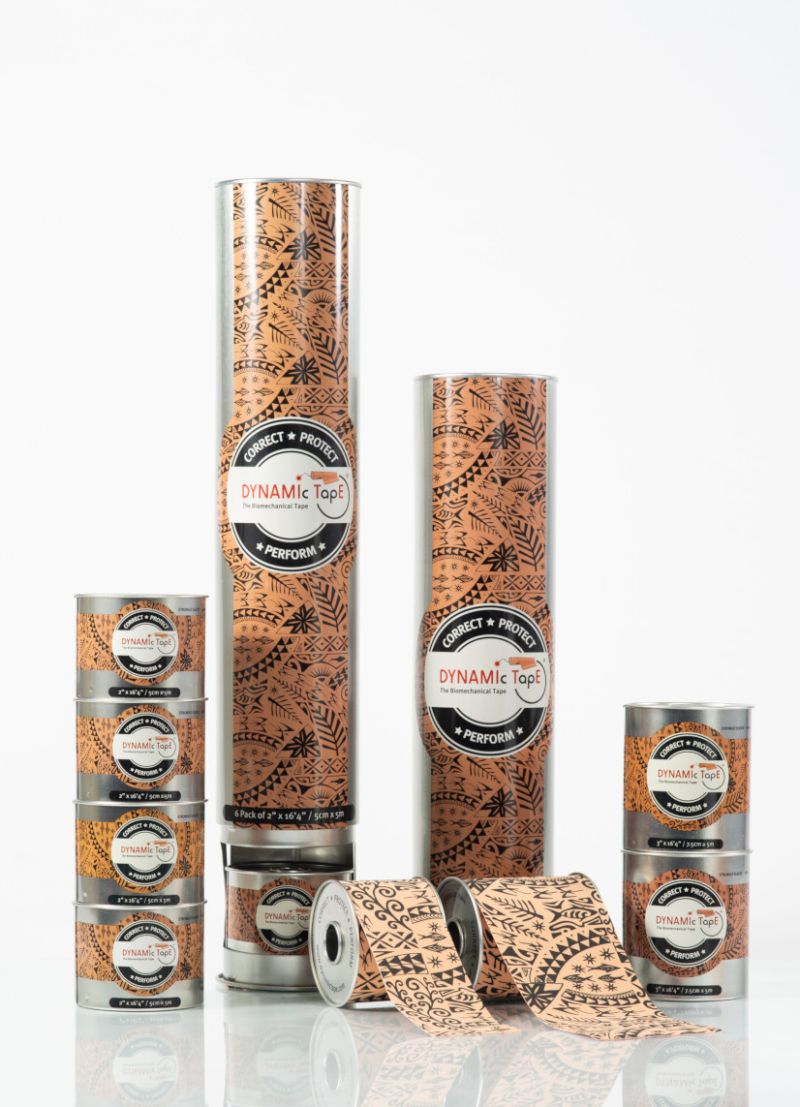DYNAMIc TapE
The Biomechanical Tape
Protect
Perform
Dynamic Type Original
Strong energy absorption, storage and return making it ideal for musculotendinous applications and large movements or multi-joint techniques.
Dynamic Tape Original comes in two widths and two colours: beige with beige tattoo and beige with black tattoo
Revolution | Dynamic Tape is NOT a kinesiology tape. Its unique properties, 4-way stretch and different grades of stretch, strength, and recoil have revolutionized how clinicians think about therapeutic taping. |
Correct | Dynamic Tape can create several kilograms of force acting as an external muscle to help take load, assist where weak or injured or to correct movement and function. |
Comfort | It is highly breathable, dries quickly and does not restrict motion making it arguably the most comfortable and effective tape available. |
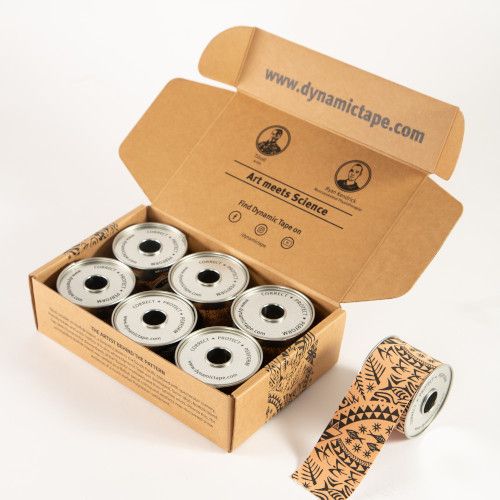
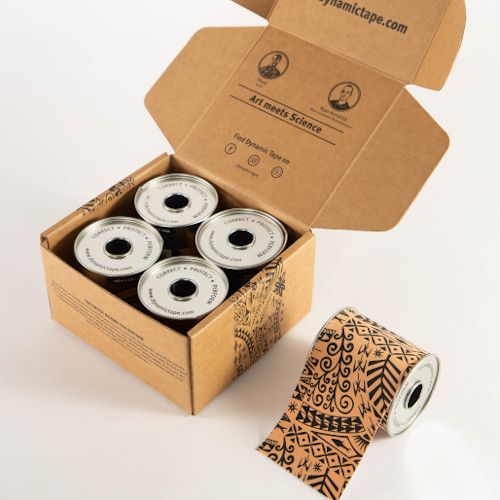
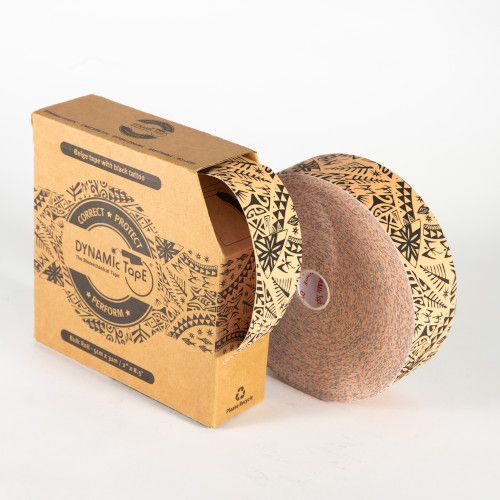
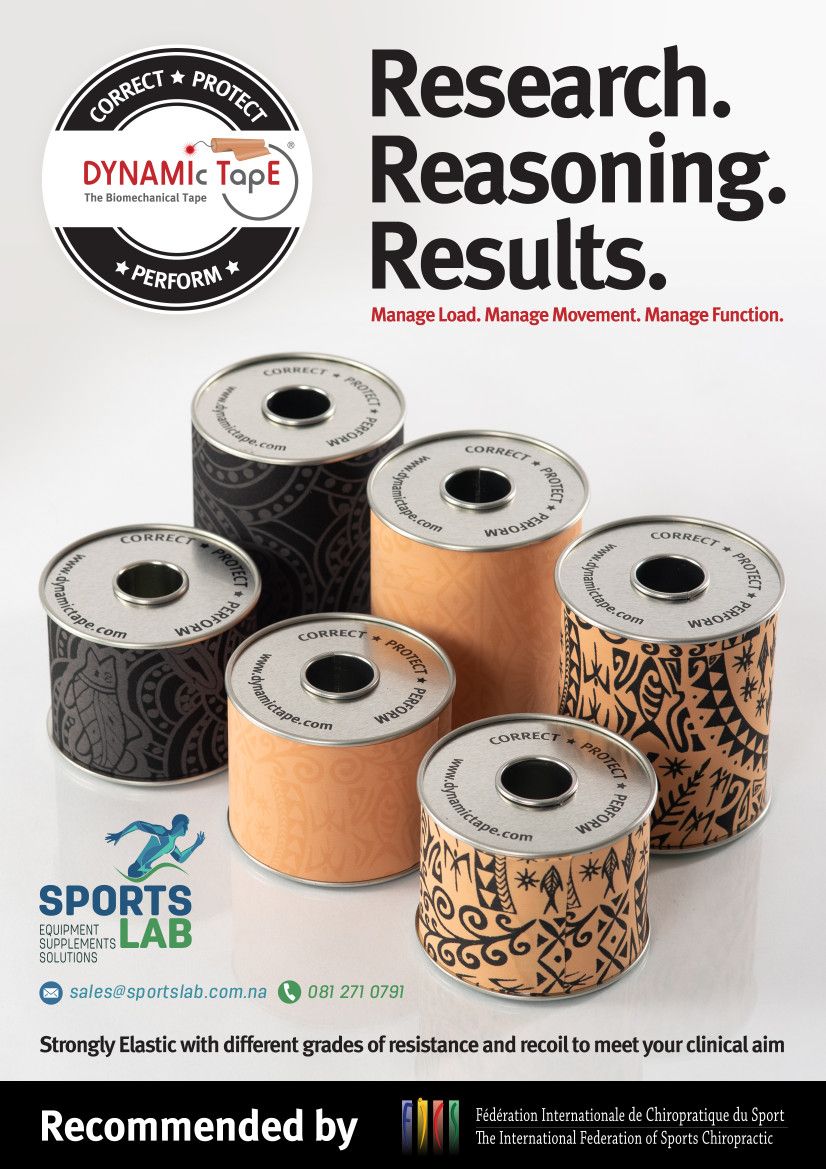
Dynamic Tape Eco
Revolution | The EXTRA STRENGTH Dynamic Tape Eco uses patented technology to provide much more resistance much sooner in range. This is ideal for applications where there is minimal movement to create tension on the tape, but firm resistance is required. Dynamic Tape Eco may, therefore, be more appropriate for ligaments (e.g. fingers, thumbs, ankles, syndesmosis) and joint glides where the added benefit of elastic compression and resistance is desirable to augment force closure and stability but when full range is still required. |
Correct | Made from recycled plastic bottles, this product has a higher elastic modulus meaning that it hits a much higher resistance without stretching as far making it well suited to techniques that require high force but where there is minimal movement occurring such as joint glides, positioning or ligamentous applications. |
Comfort |
|
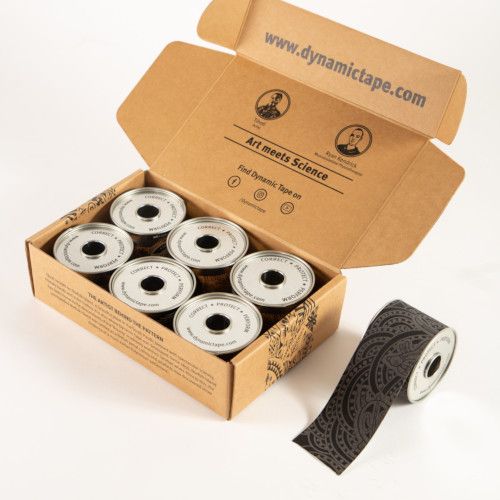
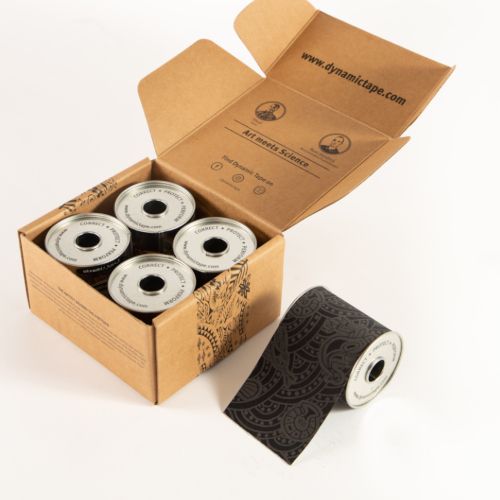
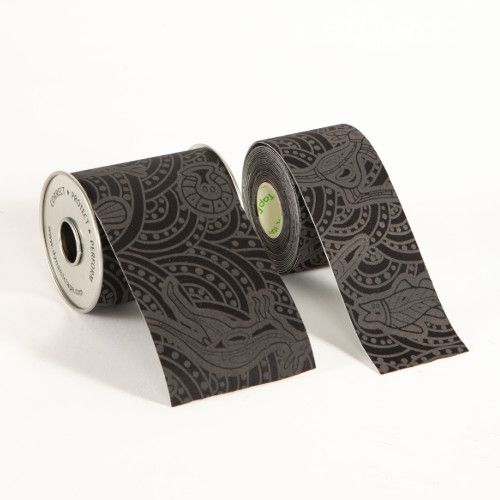
Frequently Asked Questions
Dynamic Tape is a unique, strongly elastic tape which is used in the treatment of many sporting, musculoskeletal and neurological conditions.
Dynamic Tape offers a range of products with different grades of resistance and recoil. These unique, patented, strongly elastic tapes are used in many sporting, musculoskeletal and neurological conditions to help manage load, movement & function.
This is only possible due to the highly elastic nature (no endpoint like kinesiotapes), strong forces, and four-way stretch necessary when taping multi-joint muscles and performing complex, three-dimensional skills.
In simple terms, Dynamic Tape is like a Dynamic Splint that can be applied just about anywhere. It acts like an external muscle or spring applied to assist where weak, injured or overloaded. It can resist or assist motion throughout the full range of motion.
By injecting a genuine mechanical force into the kinetic chain, it can also be used to modify movement (Kinematics) to further impact kinetics (reduce loading or force generation requirements), improve force generation efficiency and force transfer efficiency.
This in turn can improve function (e.g. overcoming gravity in a foot drop subject or resisting the knee from collapsing into flexion in a post surgical patient), reduce pain via decreased loading and therefore stimulation of peripherally sensitised (load dependent) nociceptors and help to graduate and scale load safely and effectively as we rebuild capacity.
In many cases, the tape is applied in such a way that it mimics the action of the injured muscle or tendon. The tape is placed on the body with the muscle or joint in the shortened position and with stretch on the tape. As the muscle or joint lengthens, the tape is stretched further, resisting and thereby absorbing load just as a bungee cord decelerates the jumper, absorbing load. This reduces the eccentric work of the muscles. Once full range is reached, the absorbed energy is stored in the form of elastic potential energy. As the muscle or joint begins to shorten, the energy is released back into the biomechanical chain as kinetic energy, thereby assisting the concentric action of the muscle. This results in decreased workload of the muscle, decreased metabolic demand, and improved tolerance to fatigue.
Reducing load may result in less pain, better healing (as load can be introduced sooner resulting in functional stress and better scar formation), improved endurance, and performance. Dramatic improvements in lymphatics are also observed.
In many cases, the tape is applied in such a way that it mimics the action of the injured muscle or tendon. The tape is placed on the body with the muscle or joint in the shortened position and with stretch on the tape. As the muscle or joint lengthens, the tape is stretched further, resisting and thereby absorbing load just as a bungee cord decelerates the jumper, absorbing load. This reduces the eccentric work of the muscles. Once full range is reached, the absorbed energy is stored in the form of elastic potential energy. As the muscle or joint begins to shorten, the energy is released back into the biomechanical chain as kinetic energy, thereby assisting the concentric action of the muscle. This results in decreased workload of the muscle, decreased metabolic demand, and improved tolerance to fatigue.
Reducing load may result in less pain, better healing (as load can be introduced sooner resulting in functional stress and better scar formation), improved endurance, and performance. Dramatic improvements in lymphatics are also observed.
The tape is not designed to restrict movement. If the aim is to lock up a joint e.g. acute lateral ankle sprain, then a rigid sports tape is recommended. The Dynamic Tape however could be used to permit normal, physiological range which is essential for dissipating load, maintaining balance strategies and accommodating to the ground surface while providing strong deceleration and resistance to inversion, and increasing articular stability due to triplanar compression. Research has demonstrated improvements in CAIT, FAAM as well as dynamic balance tasks like SEBT and YBT.
Dynamic Tape is also not designed to be applied in a lengthened position and then bunch up the skin like a kinesiology tape. Similarly, it is not designed to have its primary action via facilitation or inhibition due to the contact of the tape with the skin. The mechanisms are largely mechanical with the clinical reasoning based on addressing an identified deficit by the introduction of an external force into the system.
Force can lead to changes of movement or position which in turn can improve force generation capacity and force transfer efficiency due to changes in lever arms, length-tension, joint congruence (compression) among other mechanisms.
The approach does not suggest taping movement for movement’s sake or attempting to make everyone fit into some mythical ideal. We recognise that we need a variety of movement strategies to achieve a task and that different people achieve this in different ways. The tape may however be used to manage load when a desired movement is applying too much load to an injured or overloaded structure, or it may be used to modify the movement to reduce load on that structure while allowing the task to be achieved.
- Dynamic Tape is applied in inner or mid range with stretch so that the elasticity of the tape absorbs load as the muscle or joint lengthens. This will reduce the eccentric demand on the muscle decelerating the movement e.g. hamstrings. Energy is then stored and as the muscle begins to shorten is re-injected back into the system to assist the concentric contraction.
- This acts in much the same way as a bungee cord. The bungee cord absorbs load and decelerates the jumper. Once deceleration is complete, the stored energy is reintroduced and the jumper is accelerated upwards.
- Note that this only occurs if the bungee is under tension early in the jump. If it only begins to tension towards the end, very little load is absorbed and the jumper hits the ground with considerable force. In other words, applying the tape at the end of range (lengthened position) results in very little load absorption.
- Apply the tape to the middle finger of the prospect’s hand with the finger flexed and the tape on stretch. Then straighten the finger fully to demonstrate that full range can be achieved and to allow them to appreciate the amount of elastic energy contained within the tape.
- By mimicking the action of the muscle we can reduce load absorption requirements of the muscle. Reduced load equals a reduction in pain and metabolic demand which may in turn improve fatigue tolerance. We can assist overloaded muscles, compensate for weak ones, resist to encourage strengthening, and pull the body part in various directions to improve the biomechanics.
Kinesio tape and the Dynamic Tape are designed with distinct purposes in mind. Kinesio tape is crafted to mimic the elasticity of the skin. When applied at the end of a range, as the body part shortens, the tape gathers and lifts the skin, leading to improved circulation and reduced pressure on pain-sensitive structures. It can also provide some degree of restriction due to its rigid end point and two-way stretch. An easy way to understand this is by considering a finger: if Kinesio tape is applied in its inner range with a stretch, the tape may not absorb much load and may not provide significant mechanical support (think of the bungee cord analogy).
Additionally, Kinesio tape stretches in two directions only. This can be limiting, especially when taping multiple joints or when one is involved in complex, 3D movements common in many sports and activities. Furthermore, its lack of sideways stretch can reduce the effectiveness (or elasticity) of an underlying layer if the tape is placed on top and oriented perpendicularly.
Allergic reaction to the adhesive is very uncommon. If it occurs it will usually present within 30 minutes and affect the entire area covered with tape although delayed reactions to medical adhesives can occur 36-48 hours after removal.
Traction blisters usually occur on the ends of the tape or if there are creases in the skin or tension points along the length of the tape. They usually occur around 18 – 24 hours or later depending on the amount of tension and are due to faulty application.
Use Dynamic Tape Adhesive Spray, leave 5cm (2”) without tension at either end, do not stretch the tape strongly (the position achieves this), avoid starting and finishing on soft skin such as the inside of the thigh, arm and ribs, warn the patient to remove if itching, stinging, burning or irritation occurs.
Yes. Brief showers should not present a problem. Pat dry with a towel afterwards. Swimming is also fine however allow thirty minutes after application for the glue to maximally bond prior to entering the water. Adhesive spray or wipes are also recommended to improve adhesion. Wear times may be reduced with demanding activities.

Application Guidelines & Precautions
- Skin – Ensure that the skin is clean, dry, and free from dirt, creams, or oils. For best results and ease of removal, we strongly recommend removing hair prior to application. Do not apply to broken or frail skin or sunburn. If stinging, itching, burning, or irritation occurs, cease use immediately.
- Tape – To reduce peeling or curling, round off all ends of the tape prior to applying to the skin.
- Body Position – This may vary depending on the aim; however, generally place the body part in such a way as to shorten and relax the target muscles or soft tissues.
- Carefully tear and remove the backing sheet taking up tension across the length of the tape to be stretched. Avoid tangling the tape or handling the adhesive.
- As with most adhesive tapes, traction blisters can result when the tape pulls continuously on the skin. This generally occurs at the ends of the tape. Therefore, apply at least four centimetres with no stretch to act as an anchor point.
- Start/finish the technique further from the joint to improve adhesion and to increase the length of the effort arm of the tape. This will increase the mechanical advantage.
- Hold down the anchored end of the tape to minimise any tension when stretch is applied.
- Gather up the soft tissue and apply the tape with a moderate degree of stretch when ‘boxing’.
- Apply pressure to the tape smoothly as you apply the tape.
- Apply the final few centimetres of tape with no stretch to act as an anchor point.
- Where possible, avoid starting & finishing the tape on soft and sensitive areas of skin (e.g. inside of thigh and upper arm).
- Hold the tape for 60 seconds to ensure optimal adhesion, paying particular attention to the ends and to where the tape crosses.
- Start and finish on skin. Avoid overlapping or crossing if possible.
- If necessary, use adhesive spray on the back of the first layer of tape to improve adhesion.
- Due to the soft, highly waterproof fabric and the elastic nature (subsequent layers of tape pulling in different directions and with different degrees of stretch) the tape prefers to stick directly to the skin.
- It is not necessary to apply locking off strips however you may choose to do so. A rigid tape is best for this purpose.
- Take care with circumferential taping applications. As Dynamic Tape is strongly elastic it should be applied on an angle and not completely around the limb to avoid creating a tourniquet effect.
- Apply approximately thirty minutes prior to vigorous exercise, swimming or showering.
- Adhesive wipes or sprays are recommended to protect skin and improve adhesion. If overlapping tape, spray the back of the underlying layer with adhesive spray to improve adhesion of subsequent layer.
- Pat dry after showering or bathing – do not rub.
- Dynamic Tape can generally remain in place for five days if it is being well tolerated by the skin and not increasing symptoms. Some applications e.g. the fingers and hand may last two or three days and if the client is participating in very strenuous activities or going in the water, reduced wear times are to be expected.
- Remove tape in the direction of the hair. Hold down the skin and peel tape back on itself.
- Do not remove when wet.


